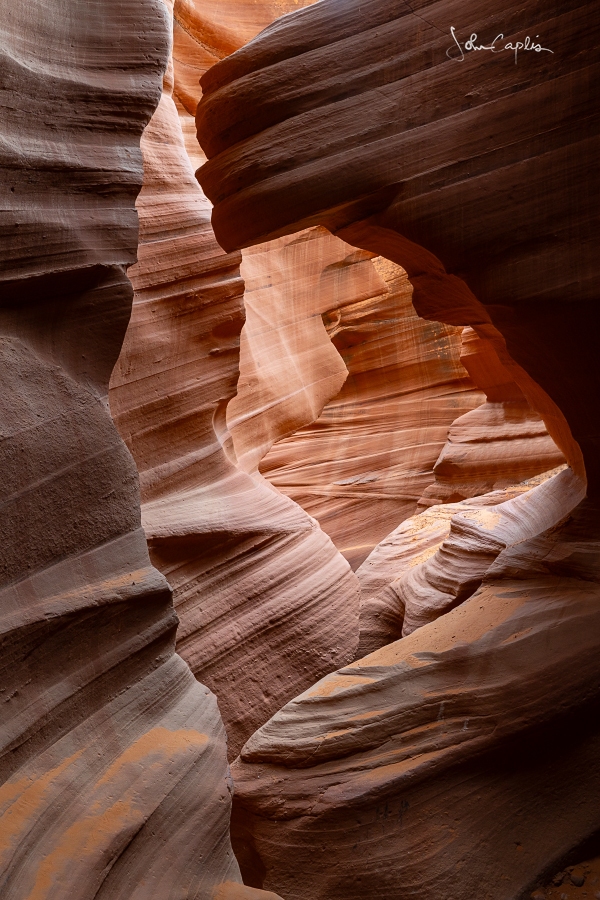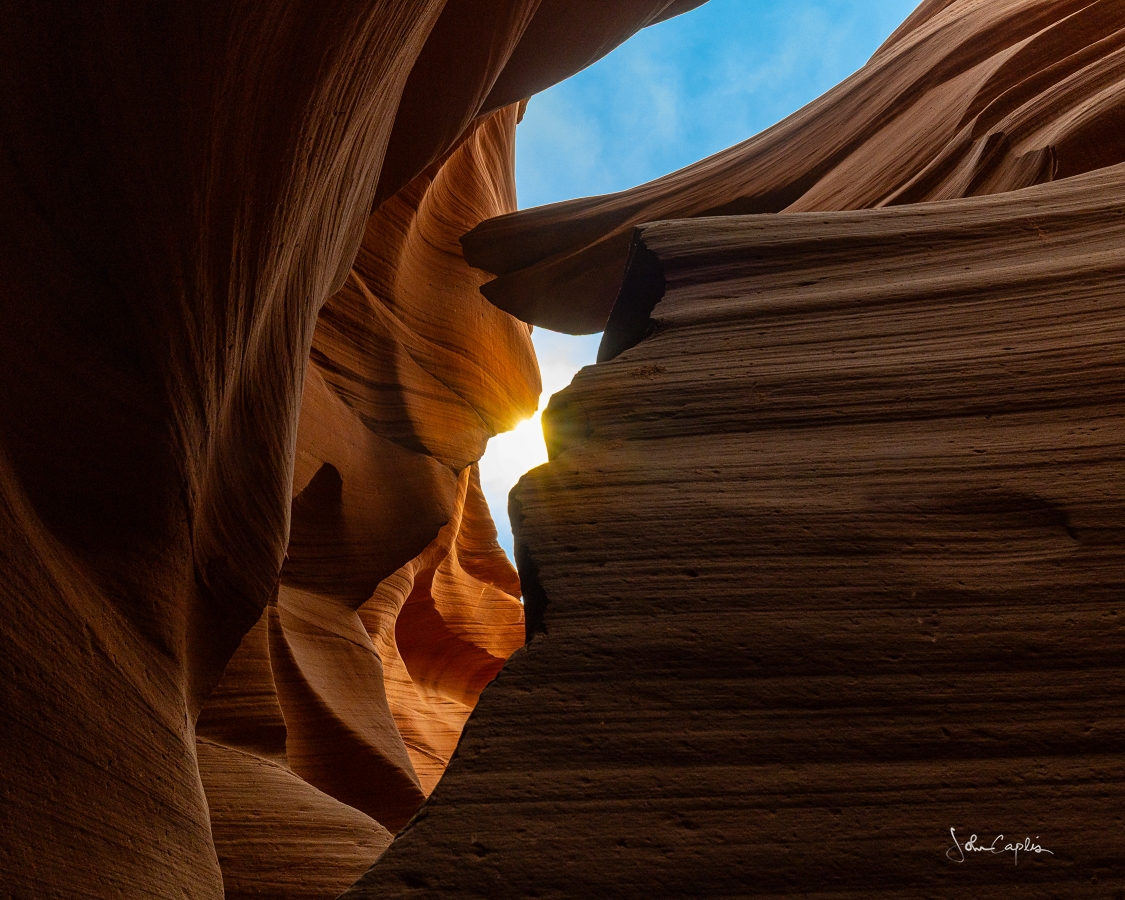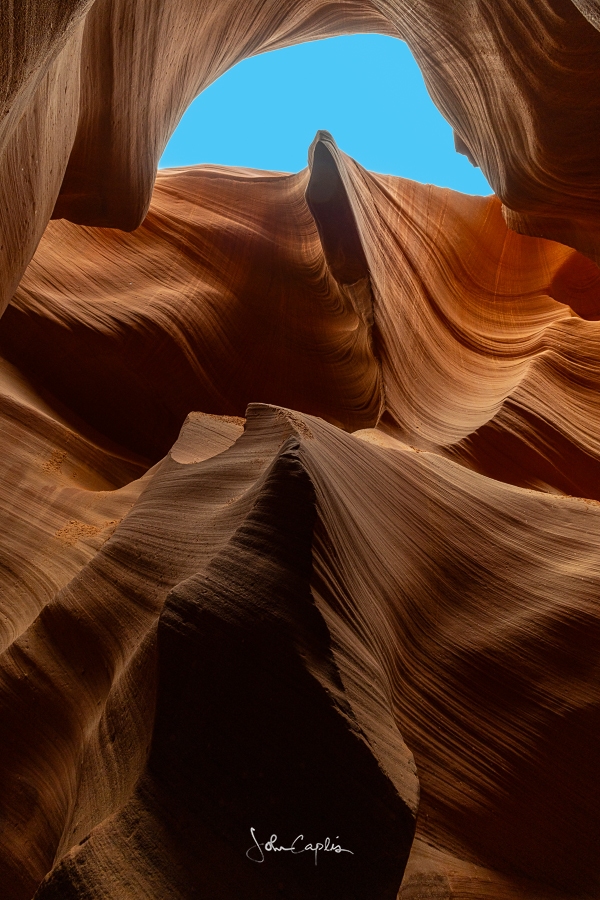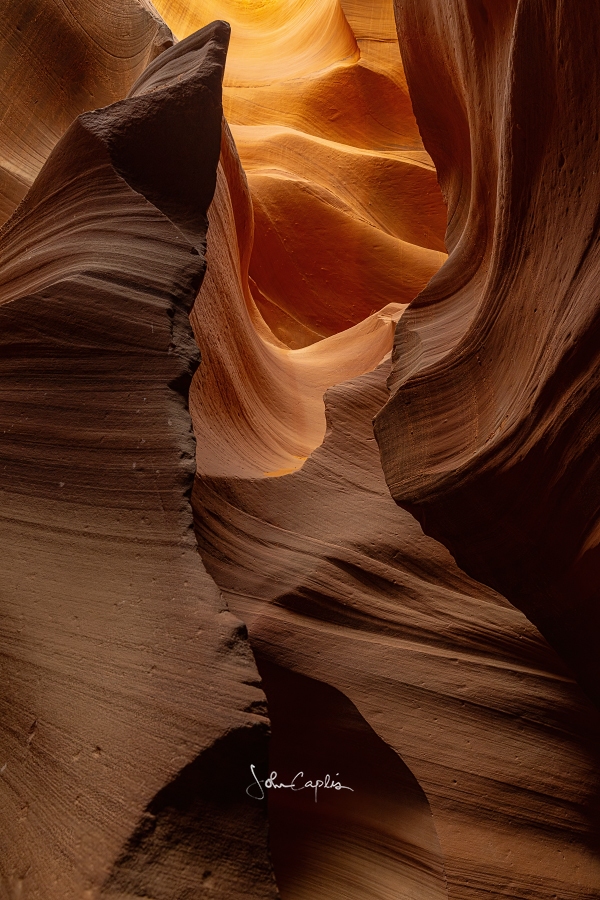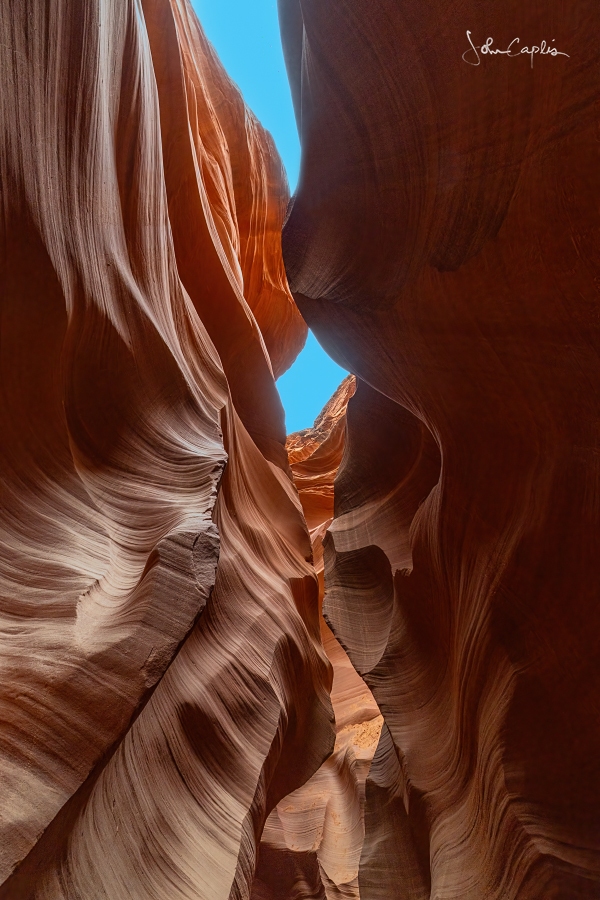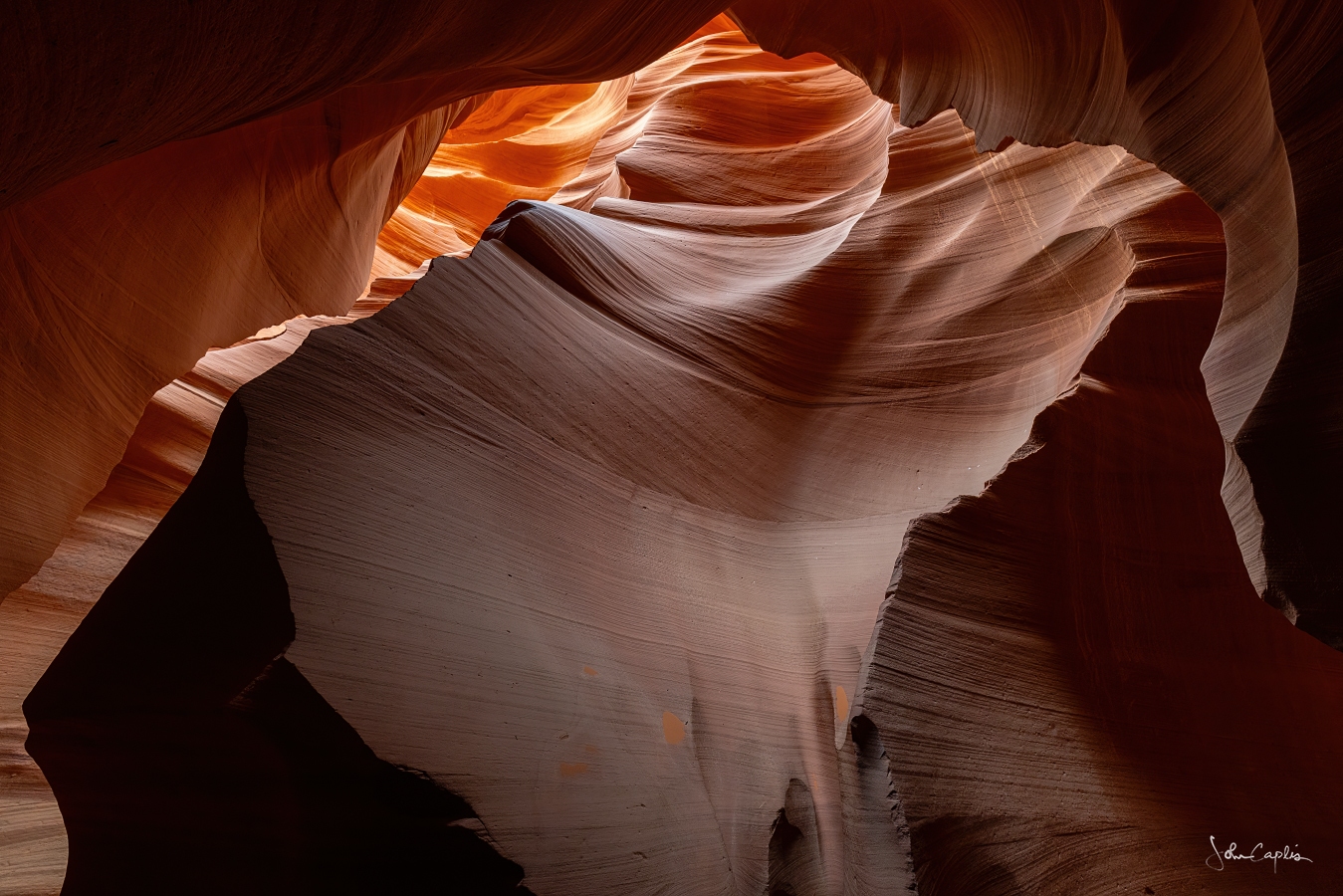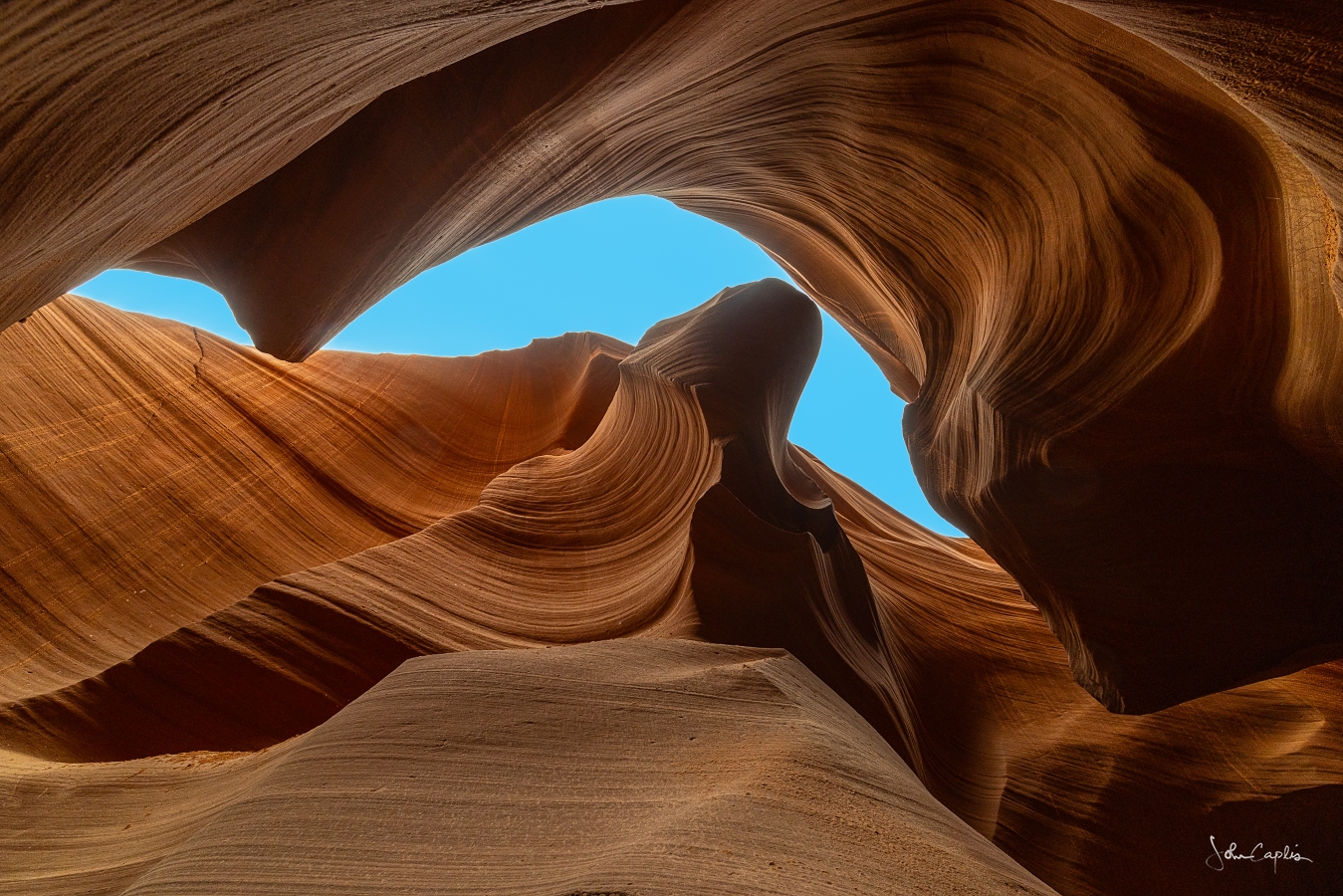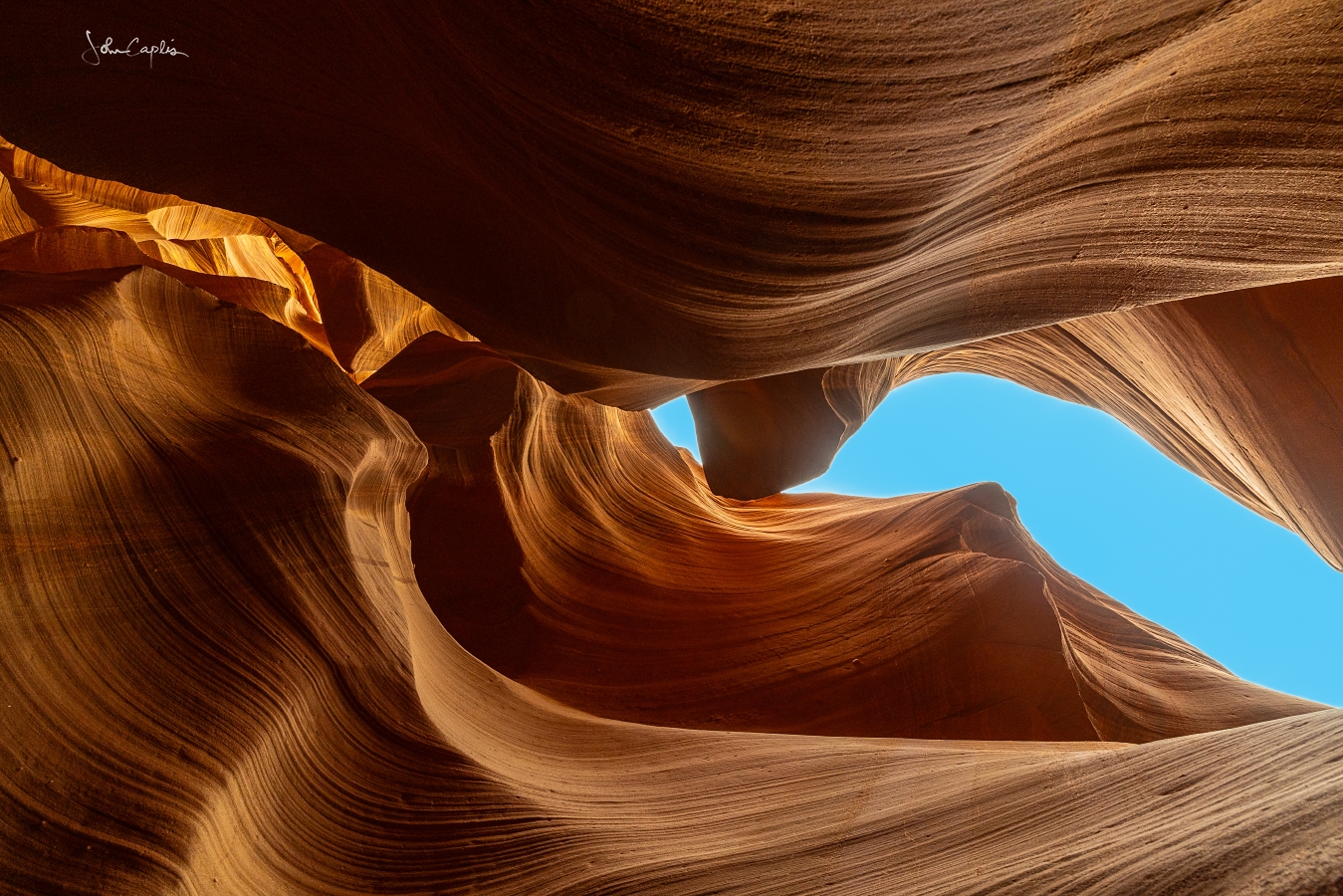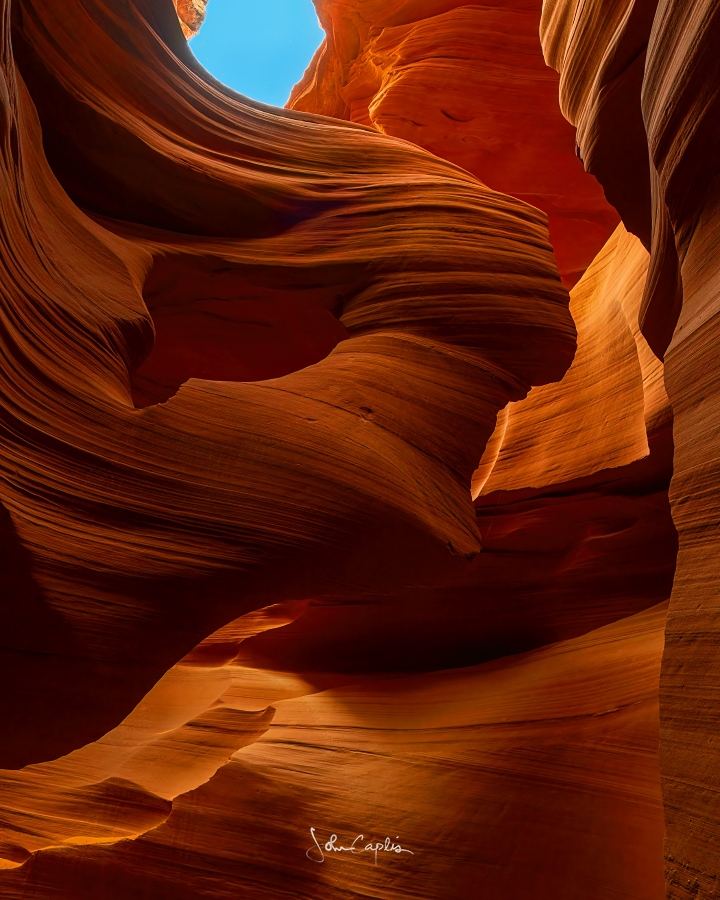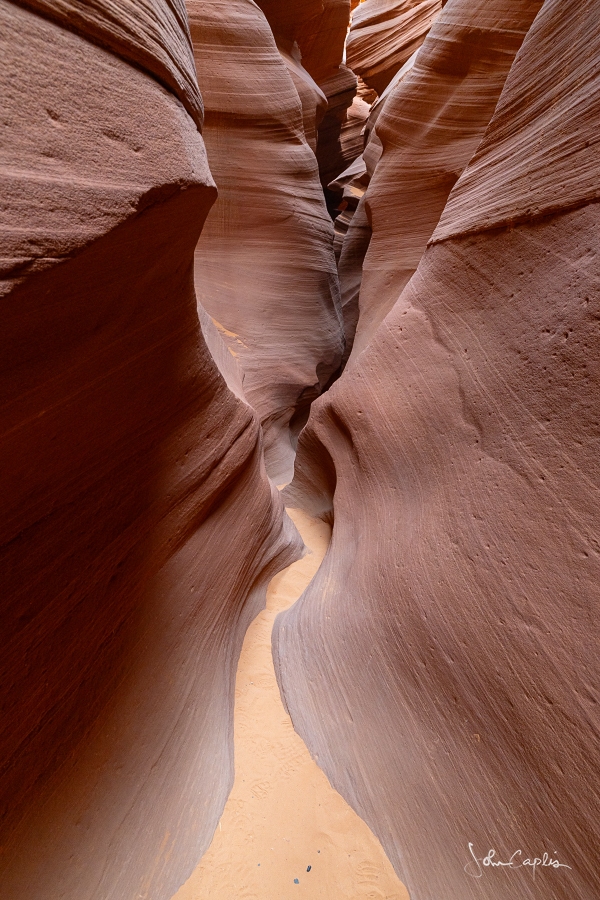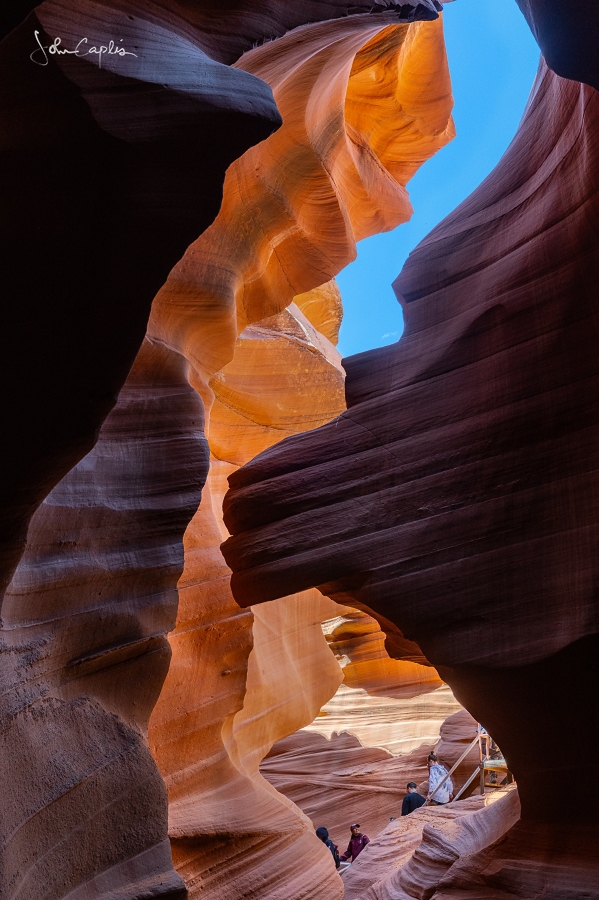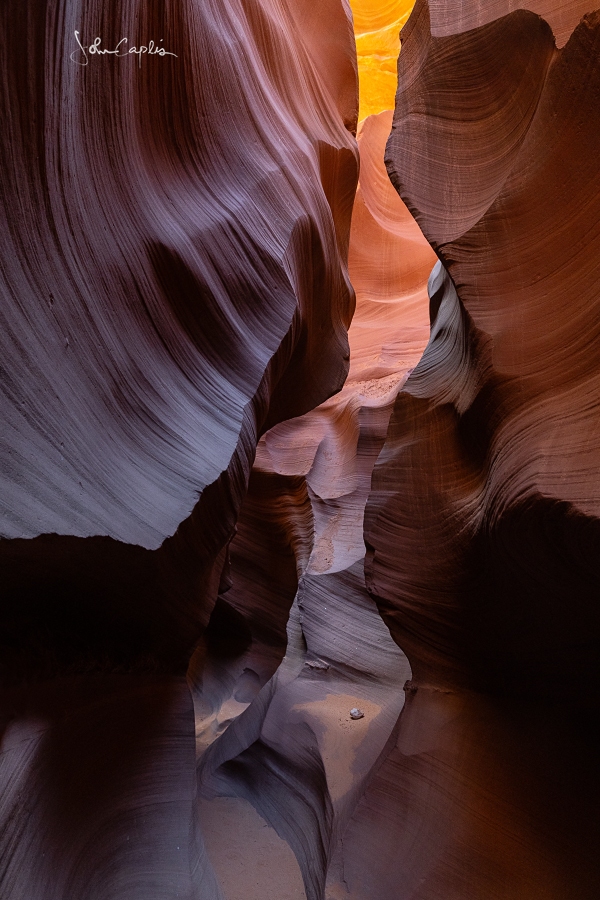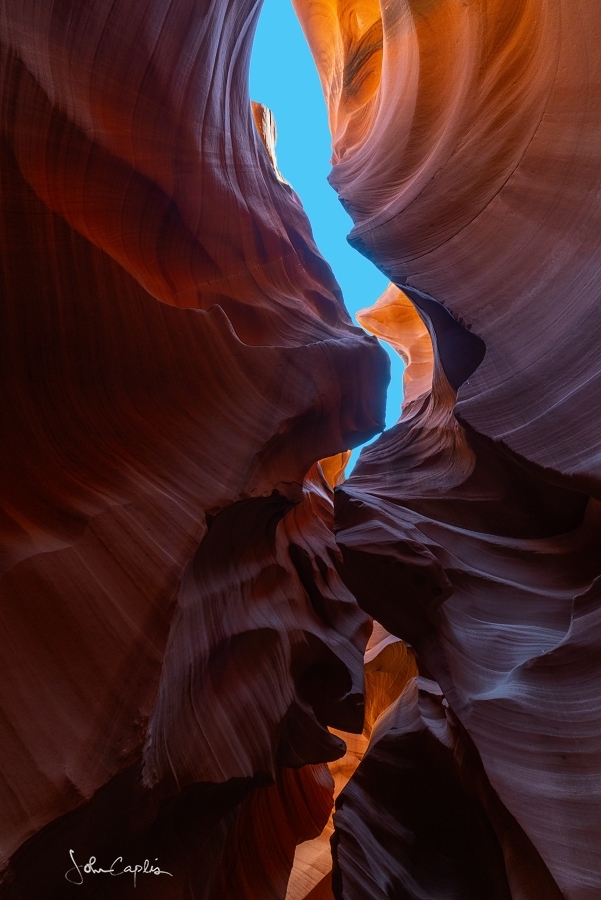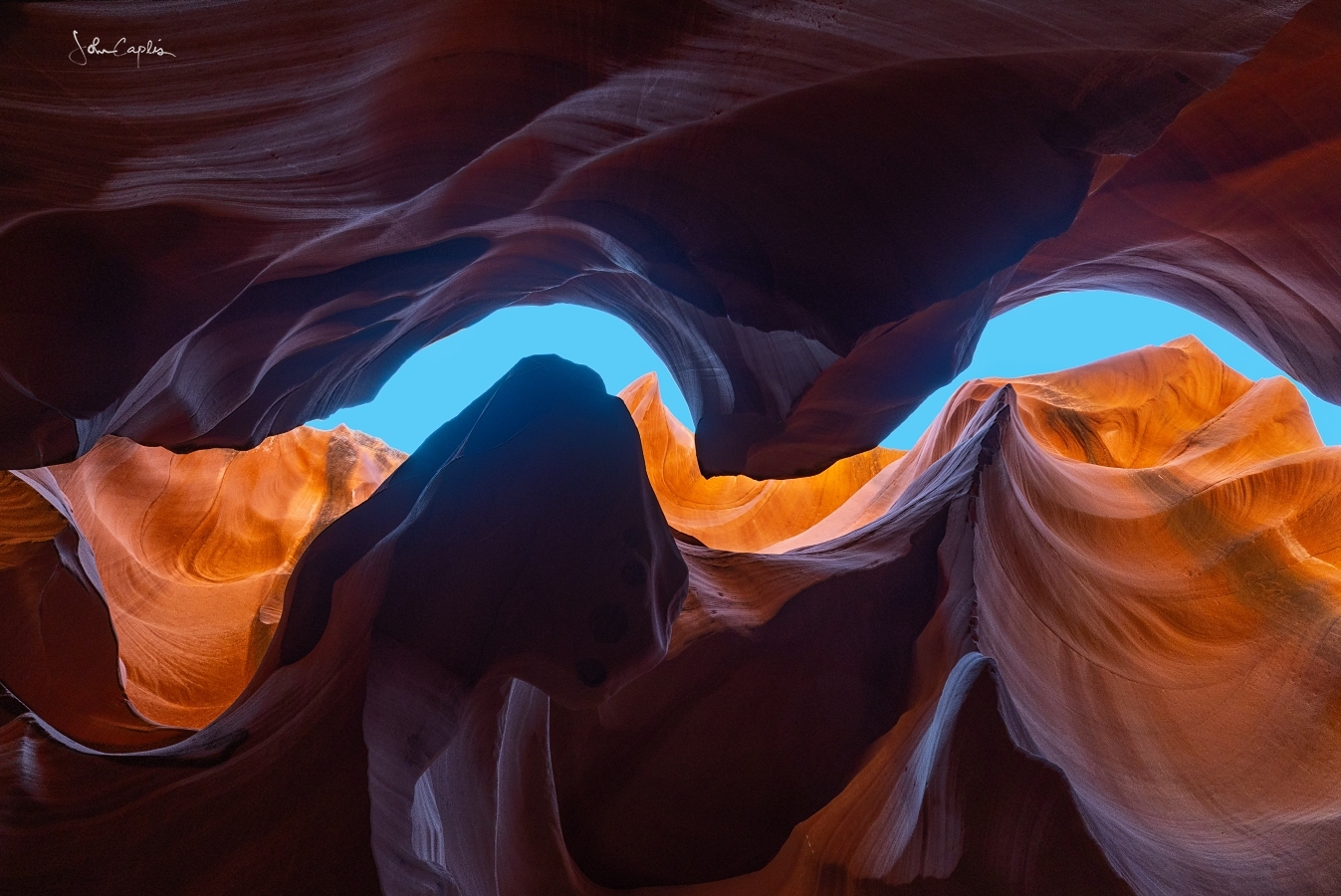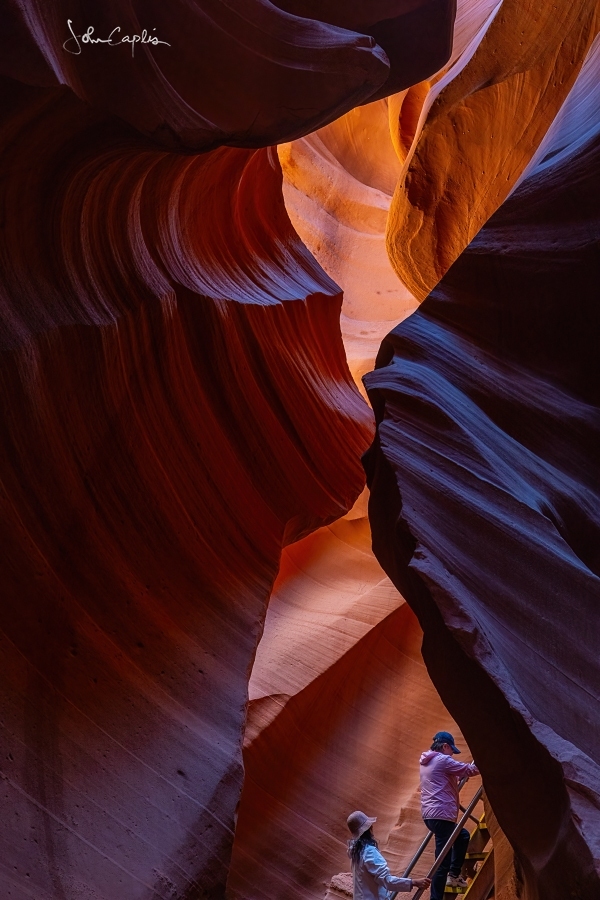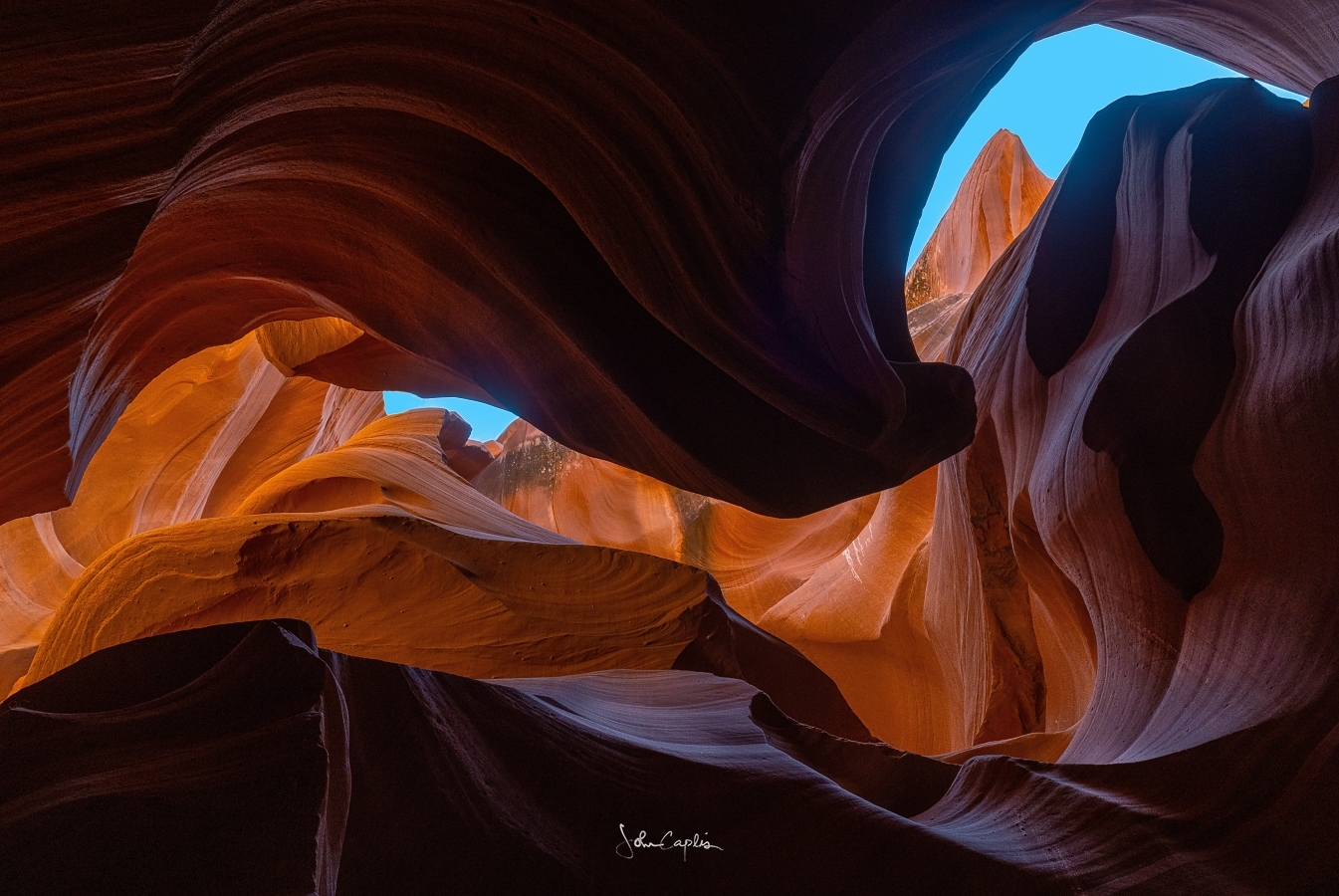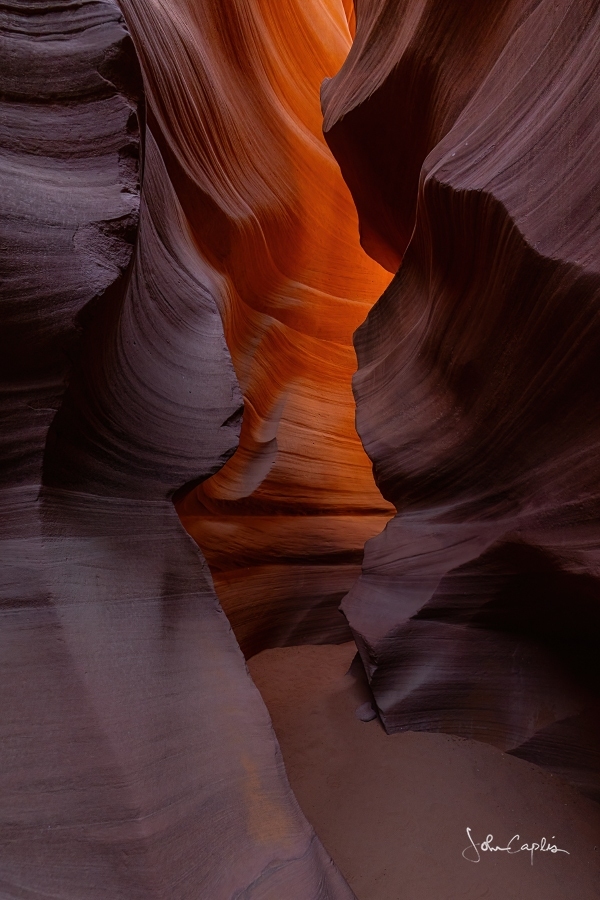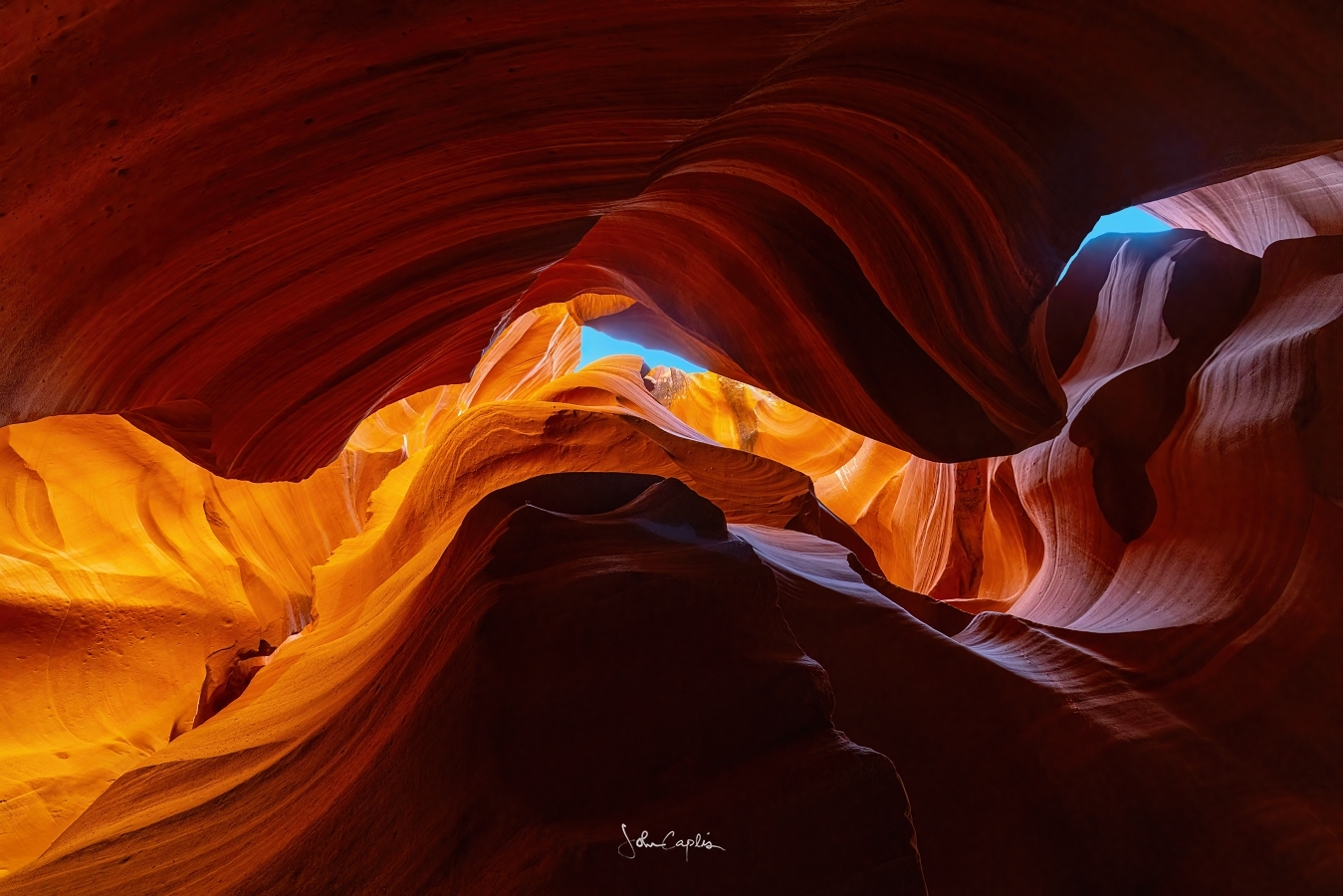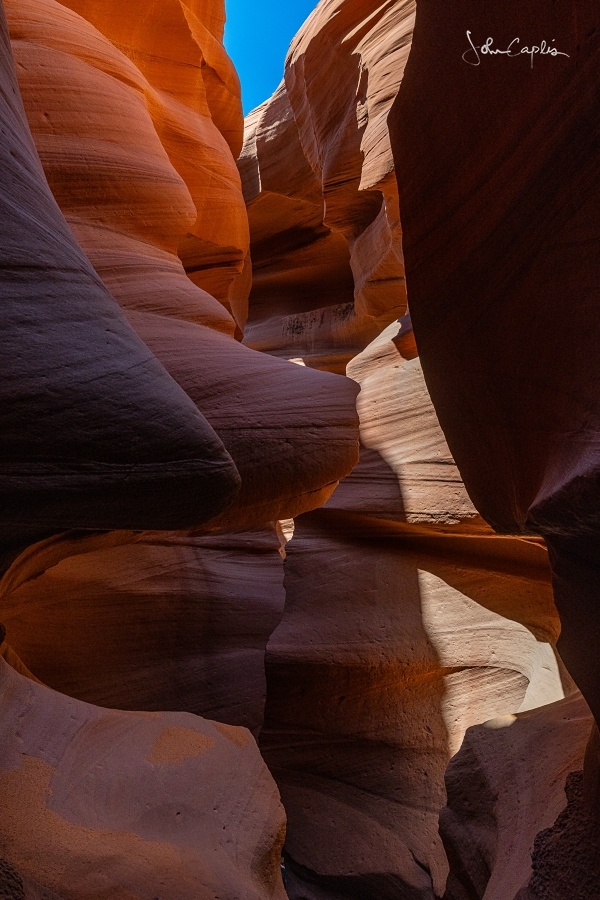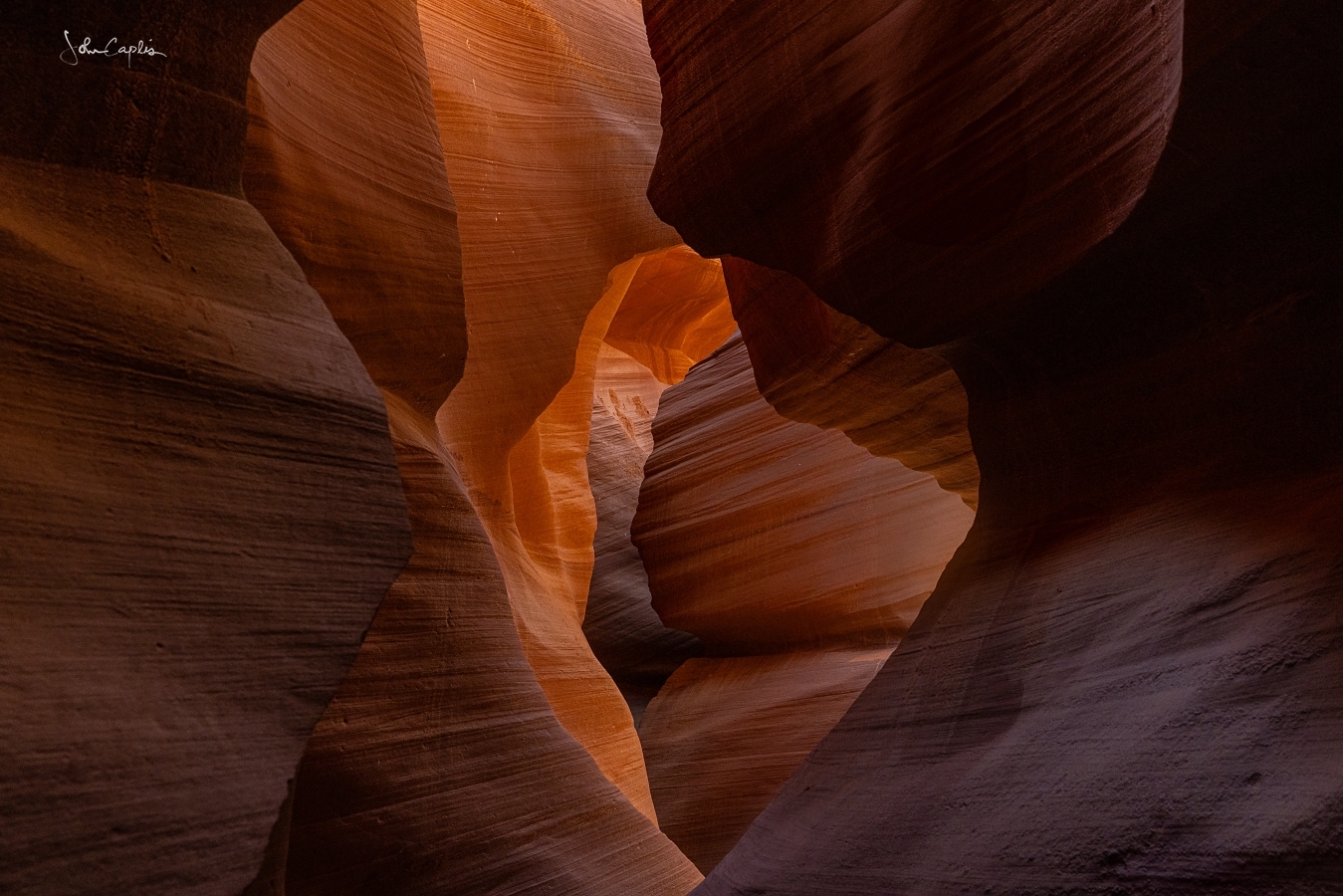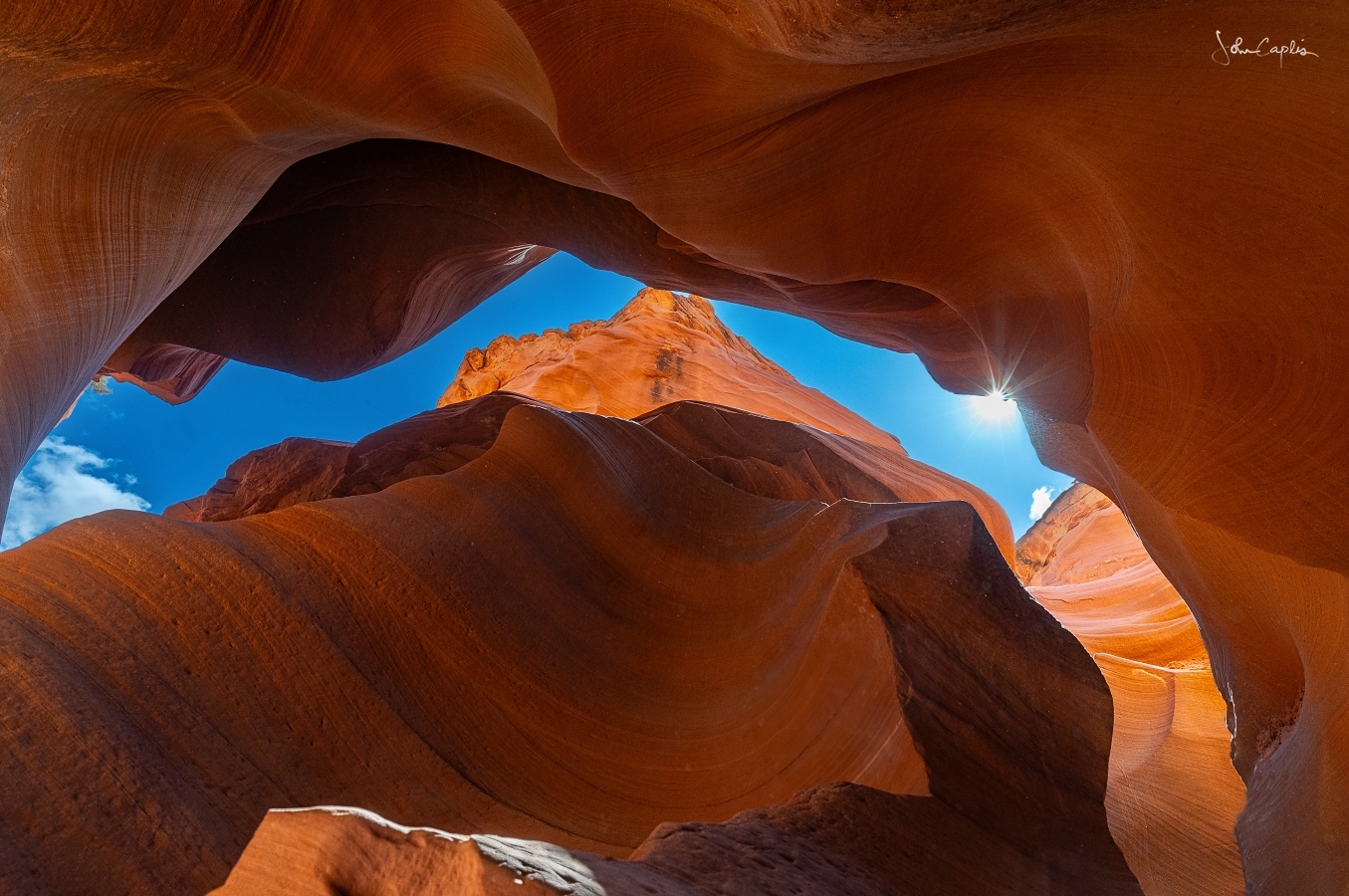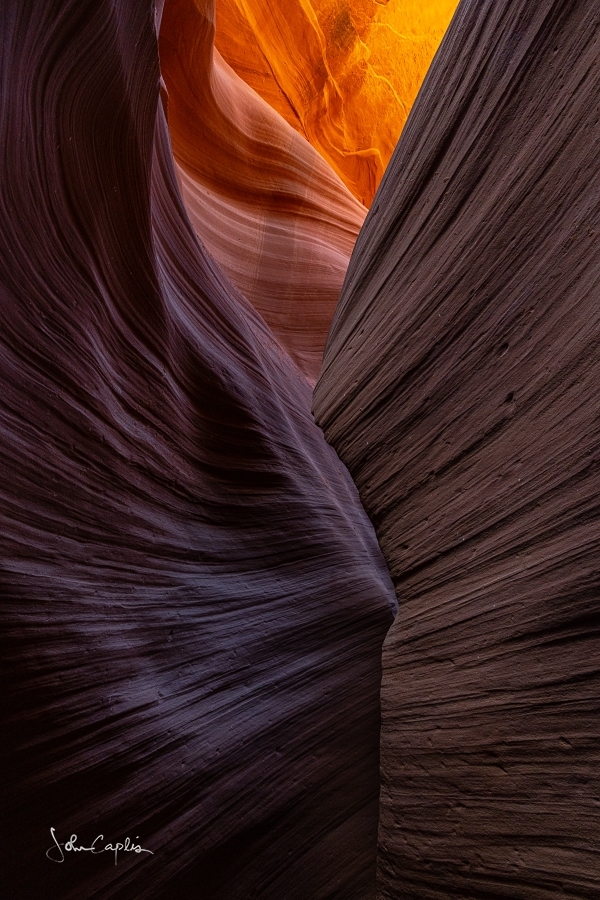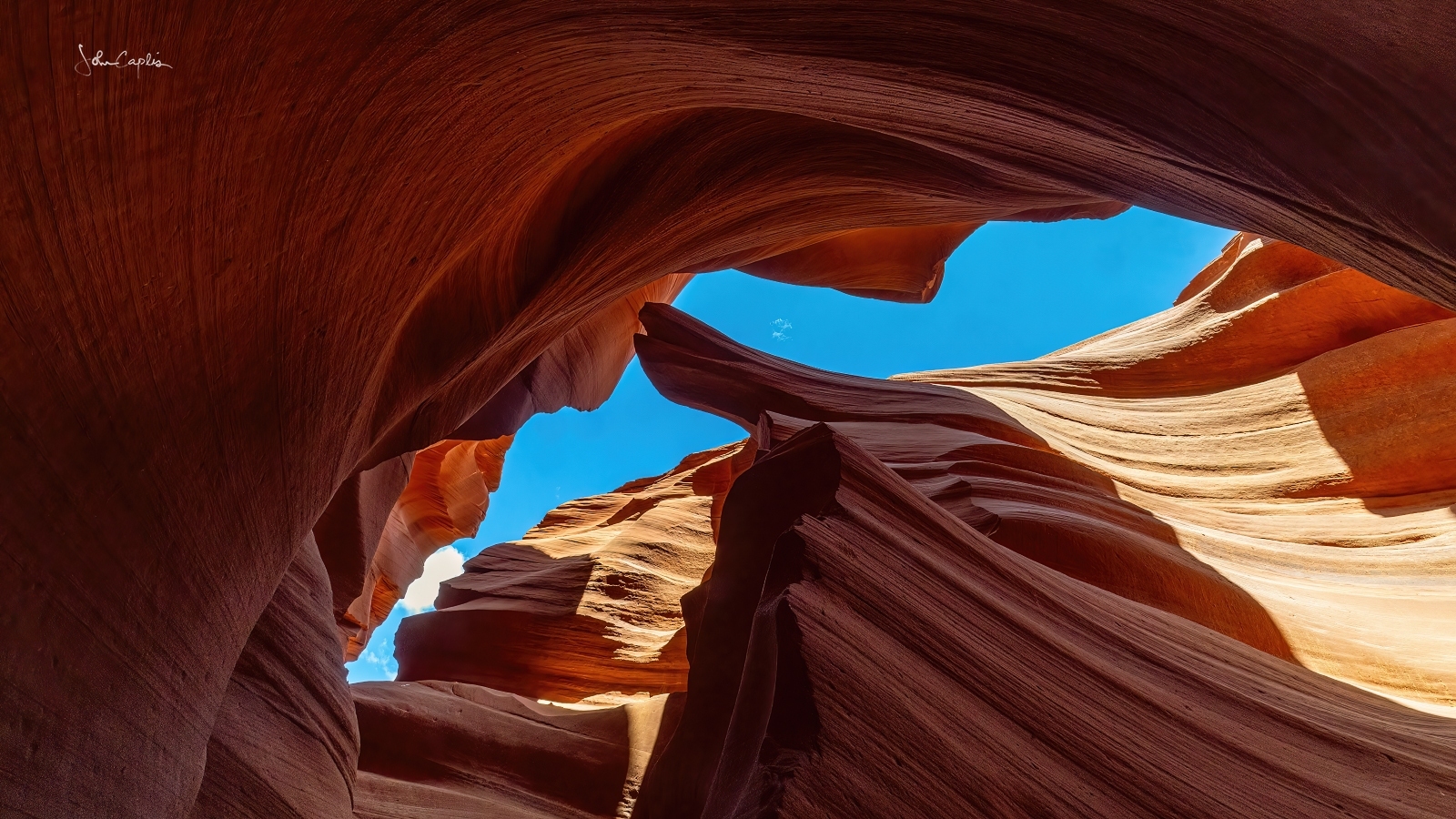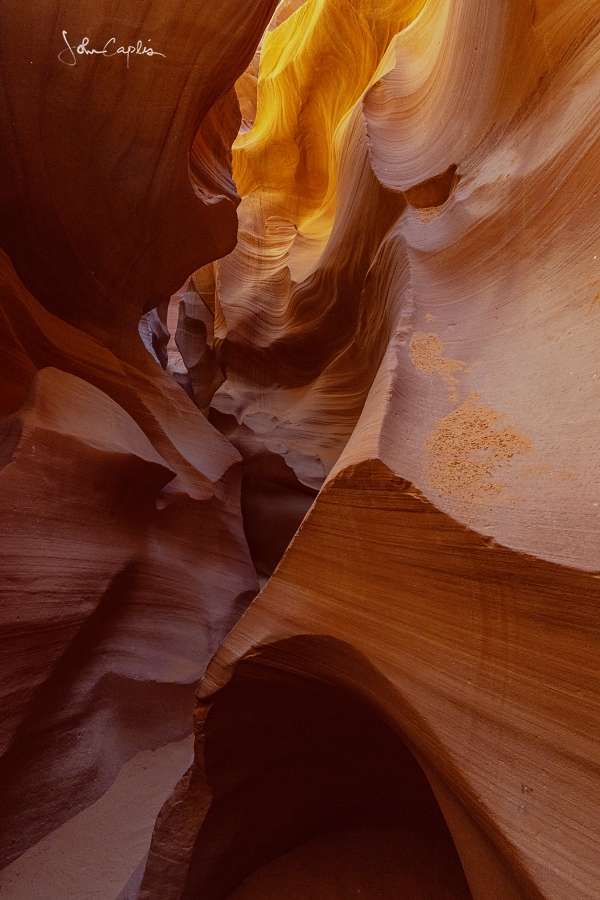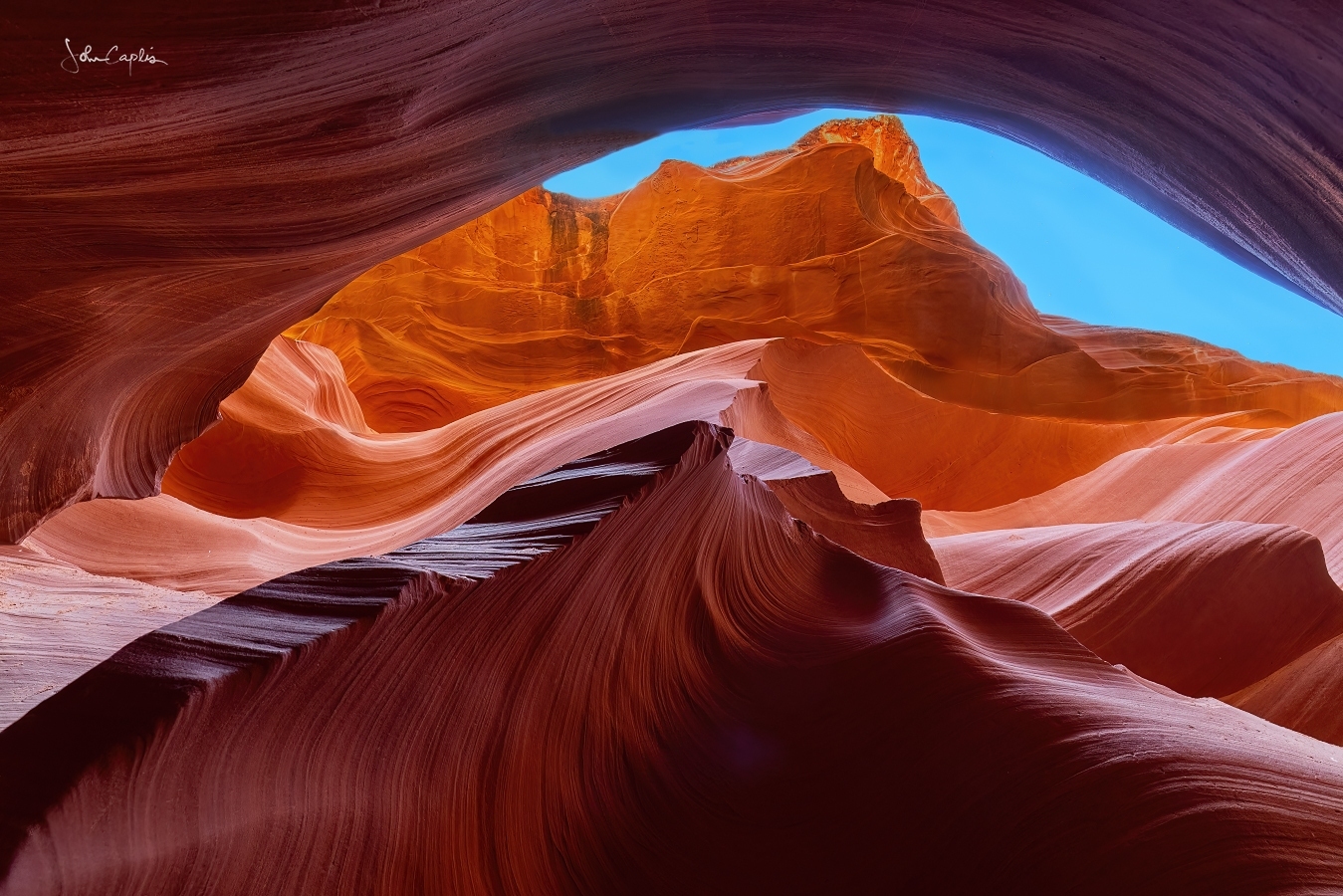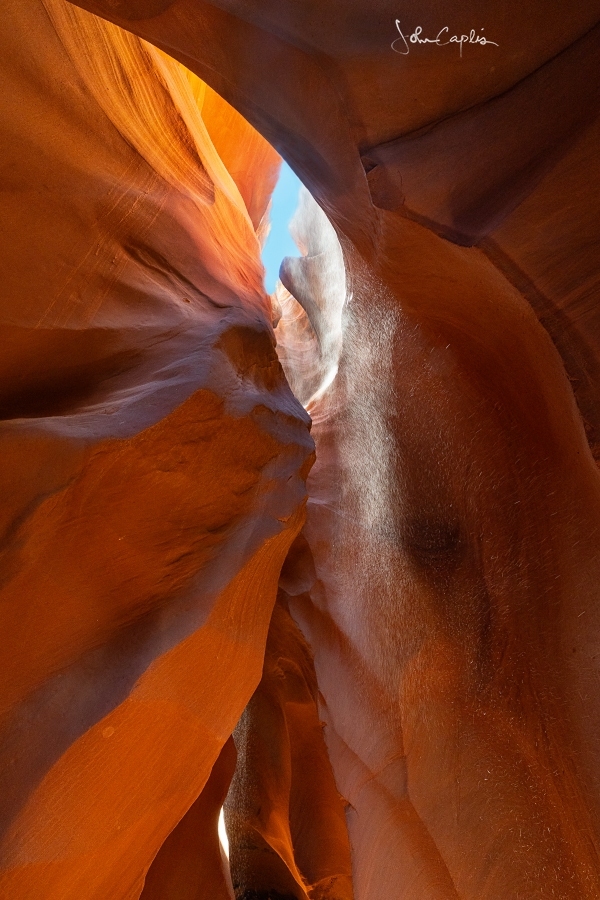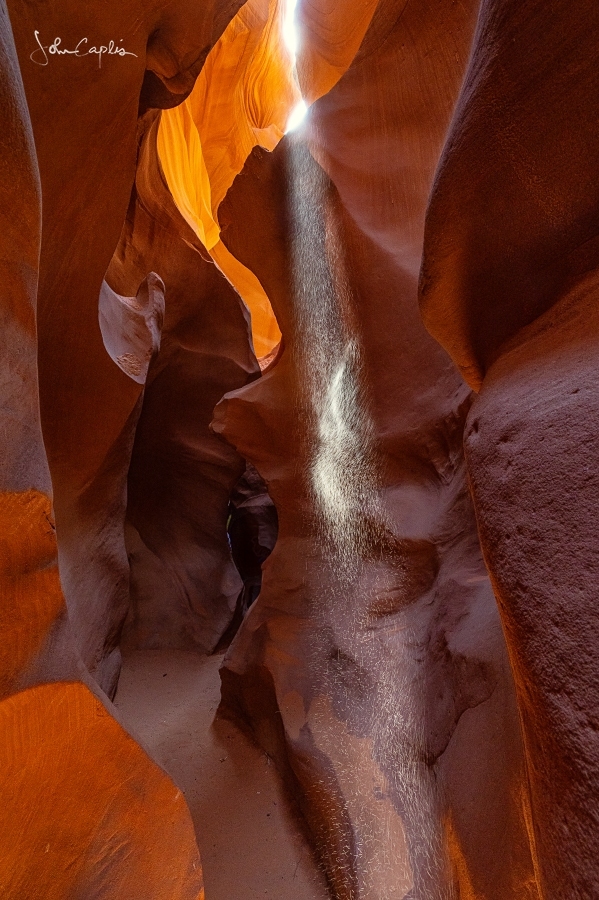Lower Antelope Canyon was formed by the erosion of Navajo Sandstone due to flash floods and wind. Over time, these narrow passageways have been honed into wave-like, flowing patterns and shapes. Reflected light often turns the canyon walls beautiful shades of purple, red, orange, and yellow. The indigenous peoples of the area, such as the Navajo or Hopi Tribes, believe these canyons are sacred places that hold much positive energy from mother earth and their ancestors. The Upper and Lower Antelope Canyons are part of the Lake Powell Navajo Tribal Park, and have been become world-famous destinations for tourists and photographers. The Upper Antelope Canyon is more “A” shaped, being very narrow at the top and much wider at the bottom. It is famous for it’s light beams in the summer months when the sun is directly overhead during the middle of the day. Lower Antelope Canyon is more “V” shaped. It has a wider opening at the top and is extremely narrow at the bottom. Lower Antelope Canyon is much longer and uneven in elevation, and must be entered and traversed through a series of installed stairways.
The appearance of the canyon will depend a lot on the type and level of lighting present. I took two trips through Lower Antelope Canyon, the first in the more diffuse light of the late afternoon sun, and the second in the brighter light of the late morning sun. I have placed the images into two groups with those made in low light first, and the images made in the brighter lighting at the end. Slightly different looks, both amazingly beautiful!
Late afternoon images: More diffuse, even lighting, no hotspots, more earthy tones.
Late morning images: More vibrant colors from increased reflected light, and higher contrast, uneven lighting with deep shadows, colorful reflected light, and very bright direct lighting (hotspots) on the canyon walls. Bonus: Lower Antelope Canyon is not known for light beams, but I was able to photograph some in the late morning light as the wind blew sand down into the canyon!

